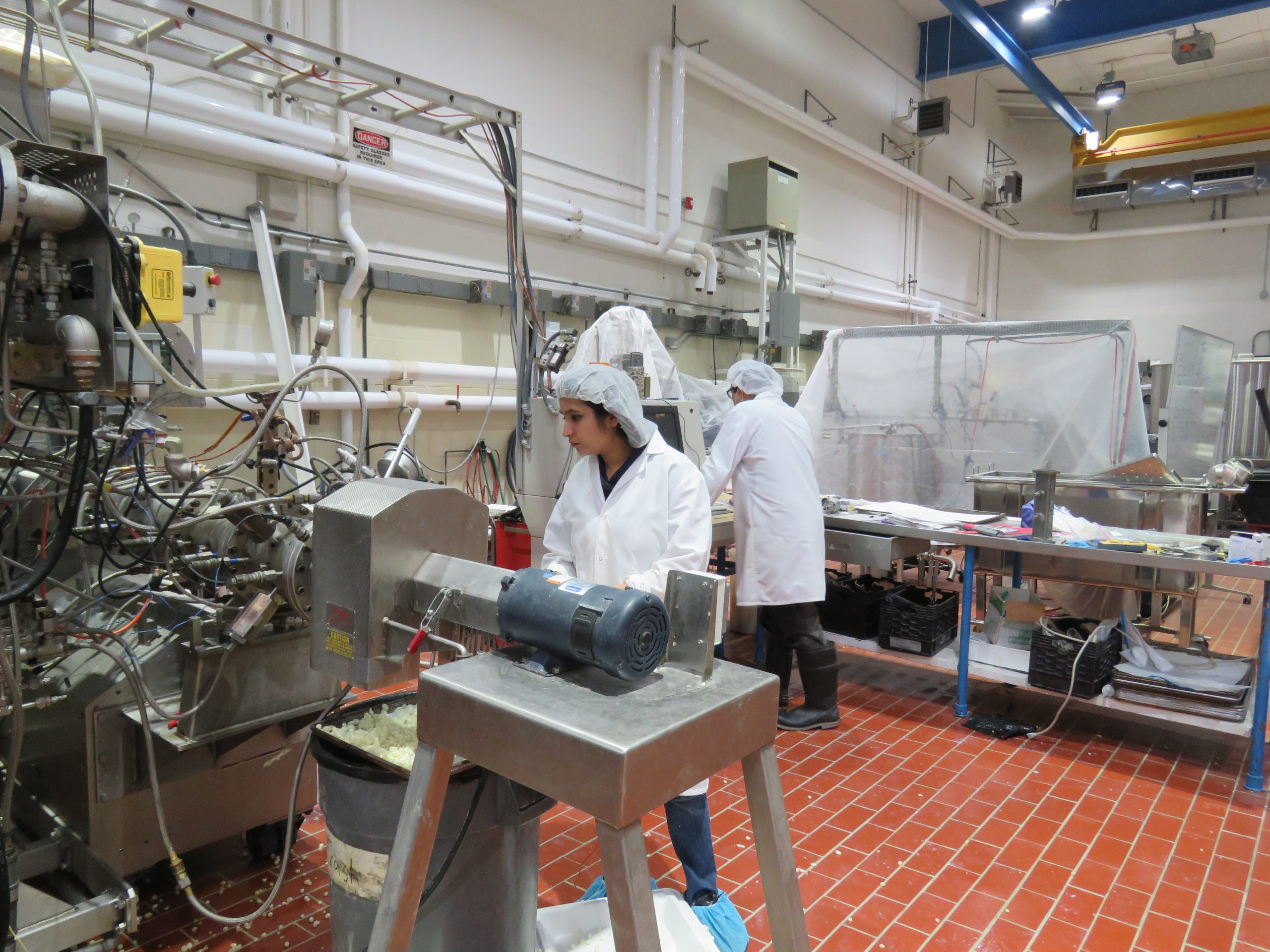Power Puffs: Creating Nutritious Puffed Snacks for Toddlers

This piece from the TCI 2019-20 Annual Report presents TCI scholar Bindvi Arora’s use of a novel food extrusion technology to create more nutritious puffed snacks for toddlers. Download the full annual report to read more.
In recent years, parents have increasingly turned to puffed snacks, which quickly dissolve in the mouth, as a first finger food for their children. It is easy to see why: typically flavored with fruit or cheese, the puffs are shelf-stable, portable, offer the convenience of self-feeding, and can be eaten without making the mess generated by other snacking. Many parents give their toddlers puffs during weaning, when a sudden shift from mother’s milk leaves them in need of vital nutrients. Most puffs, however, are starch-based and offer little nutritional value. This lack of nutritive value is especially problematic in countries with high rates of childhood undernutrition, like India.
TCI scholar Bindvi Arora is conducting research aimed at creating protein-rich baby foods, with a special focus on properties like quick disintegration, smooth mouthfeel, and ease of handling. Essentially, she is developing a milk-based puff, which would provide all the benefits of traditional puffs, but with increased nutritional value.

When injected with carbon dioxide, the milk protein-based formula expands to a larger size and can be more easily eaten by infants adjusting to solid foods. (Photo by Dan Verderosa)
To accomplish this, Arora is using a novel technology called supercritical fluid extrusion. Starch-based puffs are typically made using steam-based extrusion cooking, which involves high temperatures that can damage heat-sensitive macronutrients and micronutrients, rendering them unusable by the human body. Because Arora’s process uses supercritical carbon dioxide—which exists at a point where liquid and gaseous phases coexist—as a low-temperature blowing agent, the protein-based puffs retain their nutritional value.
For extruded material to be quickly disintegrating, it needs to be highly porous and well-expanded, allowing saliva to quickly enter its structure. Testing so far has focused on using different carbon dioxide injection pressure, temperature, and water levels during the extrusion process in order to maximize expansion.
Further research will focus on shortening the dissolve time using ingredients that can contribute to the disintegration of extruded milk-based protein, such as hydrolyzed milk protein, saccharides, and calcium-chelating agents.
This research is making significant steps toward developing nutritious, easily eaten foods for toddlers who may be at risk for undernutrition.





